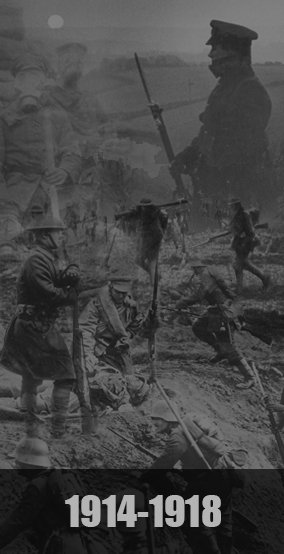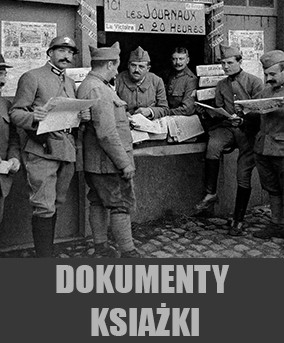Monografia pojazdów jednośladowych z Austrii, produkowanych i używanych w latach 1920 - 1938. Książka porusza również temat użycia tych pojazdów w armii niemieckiej w okresie 1938 - 1945. Łącznie 320 stron, bogato ilustrowane ponad 350 zdjęciami. Książka w twardej oprawie, dodatkowo w obwolucie. Poniżej przykładowe strony z książki.
Autorzy: Dr. Walter Blasi
ISBN: 978-3-902526-41-0 (wersja niemiecka) lub 978-3-902526-42-7 (wersja angielska)
Waga: 2,50 kg
Dane Techniczne: 320 stron, ponad 350 zdjęć i ilustracji, twarda oprawa z obwolutą. Format: 29.5 x 26.0 cm.
- Publikacja wydawnictwa Verlag Militaria, wysoko cenionego wśród kolekcjonerów i hobbystów
OPIS ANGLOJĘZYCZNY
This 320-page illustrated work is dedicated to an unexplored chapter in Austria’s vehicular history, namely the use of motorcycles in the military. The time span reaches from 1903 and the first deployment of two-wheeled vehicles on manoeuvres in the k.u.k. Army, through the Federal Army of the First Republic and the Austrian motorcycles deployed between 1938 and 1945, right up to the demise of the despatch rider in 2008 in Austria’s Second Federal Army. The text is complemented by numerous contemporary photographs as well as graphics and colour photographs of historical motorcycles related to the military from private collections.
Here the reader can discover new and hitherto unknown facts about the testing and purchasing of motorcycles such as, for example, the background of the development of the Puch 800 and the 350 GS. This means that this work on military motorcycles is at the same time a valuable source of information on the civilian models produced by the Puch Works in Graz. The varied perception of Puch motorcycles by their users is particularly significant. Other Austrian brands (LAG and Delta-Gnom) were unable to make their mark in the Federal Army of the First Republic. In an era of economic hardship and political upheaval, the occasional foreign brand also reached the Federal Army, for example NSU, James, Harley-Davidson and Moto Guzzi.
The German motorcycle manufacturer BMW enjoyed unchallenged popularity in Austria’s military, Police and Gendarmerie forces but Austria’s motor industry should not be underestimated in its role in the motorisation of the Federal Army. Government policies dictated that domestic production be supported by commissions from the authorities, although it was not unusual for these measures to be circumvented by individual public departments.
After 1920 financial straits initially hampered the acquisition of motorcycles for the new Federal Army. Although purchasing despatch motorcycles was relatively unproblematic, the circuitous path to finding a suitable, domestically-produced motorcycle and sidecar combination for military use extended almost as far as Germany’s ‘annexation’ of Austria in 1938.
In preparation for the writing of this book, the author spent several years researching sources in the Austrian State Archives and the Archives of the Republic, bringing to light some surprising facts. Based on these records a number of deep-seated rumours can now be dispelled. This book offers many new insights into a neglected chapter of Austrian military and motor-vehicle history.
OPIS NIEMIECKOJĘZYCZNY
Der 320 Seiten umfassende Bildband widmet sich einem unbekannten Kapitel österreichischer Kraftfahrzeuggeschichte, nämlich der Verwendung von Motorrädern im Militär. Der Bogen spannt sich von 1903, dem erstmaligen Einsatz von Zweirädern bei Manövern der k.u.k. Armee, über das Bundesheer der Ersten Republik, die Dienstzeit der österreichischen Motorräder von 1938 bis 1945 bis zum Ende des klassischen Kradmelders im Jahre 2008 im Zweiten Österreichischen Bundesheer. Der Text wird von einer Vielzahl zeitgenössischer Fotos, aber auch von Grafiken sowie Farbfotos von historischen, mit dem Militär in Zusammenhang stehenden Motorrädern aus privaten Sammlungen ergänzt.
Der Leser erfährt Neues und vielfach bisher Unbekanntes über die Erprobung und Beschaffung von Motorrädern, wie zum Beispiel die Hintergründe der Entwicklung der Puch 800 und der 350 GS. Daher ist dieses Buch über Militärmotorräder zugleich auch eine wertvolle Informationsquelle über die Zivilmodelle der Puch-Werke in Graz. Besonders auffällig ist die unterschiedliche Wahrnehmung der Puch-Zweiräder bei ihren Benutzern. Andere heimische Marken (LAG und Delta-Gnom) konnten im Bundesheer der Ersten Republik nicht reüssieren. Vereinzelt gelangten auch ausländische Marken in einer Zeit wirtschaftlicher Not und politischer Umbrüche in das Bundesheer, wie beispielsweise die Marken NSU, James, Harley-Davidson und Moto Guzzi.
Unangefochten hoch in der Gunst des österreichischen Militärs – aber u.a. auch der Polizei und der Gendarmerie – stand der deutsche Motorradhersteller BMW. Ein nicht zu unterschätzender Faktor in der „Heeresmotorradisierung“ war allerdings die österreichische Kraftfahrzeugindustrie, die auf Betreiben der Politik über Behördenaufträge gestützt werden sollte. Diese Maßnahme wurde von den betroffenen staatlichen Dienststellen nicht selten unterlaufen.
Finanzielle Engpässe hatten zunächst ab 1920 die Beschaffung von Motorrädern durch das junge Bundesheer behindert. War der Ankauf von sogenannten „Botenrädern“ relativ unproblematisch, zog sich die von Irrwegen begleitete Suche nach einem heimischen leistungsfähigen, militärisch brauchbaren Beiwagenmotorrad bis zum „Anschluss“ an das Deutsche Reich im Jahre 1938 hin.
Dem vorliegenden Buch ging ein mehrjähriges Quellenstudium des Autors im Österreichischen Staatsarchiv / Archiv der Republik voraus , das einige Überraschungen zu Tage brachte. Auf Grund der Aktenlage kann nun aber auch so manch hartnäckiges Gerücht ins Reich der Phantasie verwiesen werden. Dieses Buch liefert eine Vielzahl neuer Erkenntnisse zu einem vernachlässigten Kapitel österreichischer Militär- und Kraftfahrzeuggeschichte.













